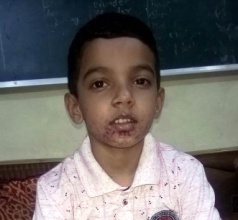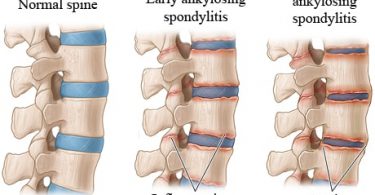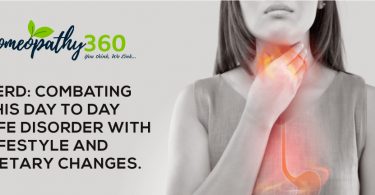
which deals with various skin diseases describing them, with causes and diagnostic pointers followed by treatment according to the laws of homoeopathy. In the following article, a detailed description of this book and its use is discussed through a case of impetigo cured by Arsenicum album, keeping in mind the philosophy, based on the totality and the therapeutic hints given in the book.
Keywords: skin Diseases, impetigo, Arsenicum album.
Abbreviations:
OPD – outpatient department.
Introduction:
“Skin diseases – their Description, aetiology, diagnosis and treatment according to the law of the similars” by Melford Eugene Douglass M.D. was published in 1899, reprinted in 1998. 1,2,3 It is essentially a therapeutic book which deals on various skin diseases. The classification, discussion and the approach is complete and practical from the homoeopathic point of view.
Contents of the book include:
- Preface: In the preface, the author has stated the reason for writing such a book, keeping in mind that the homoeopathic practitioner and student, that one should become skilful in the principles of general medicine, and in knowledge of the general course andand behaviour of skin diseases, in order to treat skin affections intelligently and successfully as the skin is the outer man that always receives the great attention, prioritising the cause andand the totality of each skin ailments for a successful prescription.1
- Construction of chapters: A general pattern is being followed as described below:
- A general introduction
- Pathology and aetiology
- Diagnosis
- Prognosis
- Treatment including appropriate external applications and homoeopathic therapeutics, with brief description of symptoms of many conditions presented according to their significance, and some of them presented without any therapeutics.3
- Total number of chapters in the book are 21, in which various skin disorders under various heads are being mentioned.
1. The anatomy of the skin: A detailed lecture on the anatomy of skin, including all the layers of epidermis and dermis, nails and hairs; the blood supply, nerves and pigmentary cells, sweat and sebaceous glands is being mentioned.1
2. Some general observations: Since all violations of the general laws of health may produce diseases of the skin, it becomes necessary to inquire into the habits, occupation, diet and dwelling-places of those seeking treatment. For example:
- Symmetrical presentation of skin ailments due to blood poison is done among the temperaments as: lymphatics are prone for eczema, impetigo, intertrigo, pustular scabies, and ringworm; rheumatic for erythema nodosum; strumous for eczema, lupus and florid for psoriasis etc.
- Considering occupation, it’s been described as cooks are liable to eczema and erythema; bakers, grocers, bricklayers for lichen; chimney sweepers for epithelioma of scrotum; cotton workers for urticaria; butchers and graziers to whitlow, boils, malignant pustules and ecthyma; shoemakers for eczema, etc.
- General interpretation that diseases of children are the result of malnutrition from deficient of bad feeding; of adults are the result of malassimilation and of aged are due to degenerative changes.1
3. Classification of the elementary lesions: Classification is done as macules, vesicles, bullae, pustules, papules, tubercles, scales, fissures, and ulcers.1
4. Aetiology: The cause of the various skin diseases is emphasized, stressing upon the utmost use of hygiene.1
5. Local dermal inflammations: This chapter helps the homoeopathic dermatologist to become fully acquainted with the eruptions of the skin produced by the administration of medicinal substances/drugs, which include erythematous diseases, erythema multiform, erythema nodosum, roseola, urticarial, follicular hyperemia, medicinal rashes.1
6. The eruptions of acute specific diseases (zymotic): This section describes the eruptions of acute specific diseases like variola, varicella, typhus rash, typhoid rash, measles, scarlatina, erysipelas, rubella, framboesia.1
7. Papular inflammations or diseases: Lichen planus and other papular inflammations like ruber, simplex, scrofulosorum, strophulus, prurigo are being discussed.1
8. Eczema: The causes of eczema are mentioned here, as in obese persons, eczema may arise from the irritation produced by the confinement of the cutaneous secretions by overlapping folds of skin, under pendulous breasts and in the groin region between the thigh and genitals.1
9. Bullous diseases and anomalous forms of bullous eruption: Under this section, the author has mentioned the diseases characterised by the occurrence of bullae and have the nervous systems influence example herpes and pemphigus.1
10. Suppurative inflammation or pustular diseases – impetigo, ecthyma, furunculus, carbuncle, malignant pustule: The pustular diseases, are defined, comprising impetigo, ecthyma, and furuncular affections (furunculus, or boil); anthrax or carbuncle; and pustular maligna, or malignant boil.1
11. Squamous inflammation: Pityriasis and psoriasis are being dealt in this chapter.1
12. Diathetic diseases: Diseases discussed here are Scrofuloderma, Syphilis, Condylomata, Leprosy, Morvan’s disease.1
13. Hypertrophic and atrophic affections: Diseases of the epithelial layer of the skin, including callosities, corns, and horns, in which the epithelial tissue is especially affected and those diseases involving the dermic portion in which the true skin is affected with or without the epithelium are being discussed.1
14. New formations, or neoplasmata: Homeopathic remedies for lupus, sarcoma, epithelioma and cancer of skin are being described, which may be compared under rodent ulcer of the face. (Mainly Arsenicum album, Belladonna, Cicuta virosa, Hepar sulphuricum, Hydrocotyle asiatica, Hydrastis canadensis, Mercurius, Nitricum acidum, Silicea terra, Staphysagria, Sulphur, Uranium).1
15. Cutaneous haemorrhages: The secondary forms of cutaneous haemorrhage are described in connection with typhus, measles, scarlatina, and variola, the early eruptions of which may severally be more or less haemorrhagic, the hyperaemia being accompanied by actual haemorrhage into the skin along with therapeutics are being discussed in this section.1
16. Pruritus: Pruritus is described which may be general or local, followed by secondary changes in the skin.1
- Repertory section for pruritus constitutes
48 medicines, described as:
- Similar to therapeutic notes of homoeopathic medicines
- Starting from ‘itching as from ants’ to ‘wandering’
- Separate section for locality, ‘anus’ and ‘sexual parts’ taken as rubrics3
17. Chromatogenous diseases, or alteration in the pigmentation of skin: Cases are discussed in which the pigmentation of the skin is at fault, disease may be divided into two classes: one in which the pigment is deficient in quantity (leucoderma or vitiligo), and the other in which it is in excess (melanoderma or melasma). 1
18. Parasitic diseases: Homoeopathic medicines for the animal parasites such as Acarus scabiei, or itch mite; the Pediculus, or louse; the Cimex lectularius, or bedbug; the Pulex irritans, or flea; and the Pulex penetrans, or chigoe is discussed.1
19. Disorders of the glands: Disorders of the sweat glands (hyperhydrosis) and sebaceous glands (acne, cysts) and their homeopathic management with indicated remedies is described in this section.1
20. Diseases of the hair and hair follicle: Diminished formation of hair is (partial or general), comparative (thinning) or absolute (alopecia) is being mentioned in this chapter.1
21. Various lesions not classified: Chilblainsoccurring as a secondary effect of cold, pernio attacks over the nose and ears are discussed here. 1
- Index is given towards the end. 1
Repertory part: There is no separate section for repertory, but is considered under verrucae or warts as Repertory of Warts and Repertory of Condylomata by Olin Milton Drake. The gradation is in roman, and the rubrics are arranged alphabetically, mentioning the cross-references wherever necessary. The numbers of medicines used are 90.
The arrangement in repertory of warts is as follows:
– General rubric
– Sub-rubric
- Locality, under which various locations are given arranged alphabetically from ‘anus, about’ to ‘tongue upon
- Objectively considered, where objective findings are given as rubrics from ‘bleeding’ to ‘ulcers’
- Subjective symptoms, where rubrics are mentioned from ‘burning’ to ‘tickling’
The arrangement in repertory of condylomata is as follows:
- General rubric
- Sub-rubric
- Locality, which constitutes rubrics from ‘anus upon or about’ to ‘vulva upon’
- Objectively considered, constituting rubrics from ‘bleeding’ to ‘white’
- Subjectively, which constitute rubrics from ‘burning’ to ‘stitches in’3
Working a case: The diagnosis has to be referred under the appropriate chapter, followed by the medicines with their indications, which are then matched with the totality obtained from the patient from the therapeutic section and the simillimum is prescribed accordingly.
Merits:
- This is a book exclusive for diseases related to skin and all rubrics are present in a single chapter at one place.
- Repertory part for warts and condylomata is useful due to simpler construction, with worthy rubrics having only 90 medicines which are found easier during clinical application.
- Some special rubrics such as corns, ephelis, herpes labialis, hordeolum, ingrowing toe nails, disorders of perspiration, paronychia, scleroma, scleroderma, seborrhoea are mentioned.3
Demerits:
- It is a useful book from the homoeopathic point but it lacks the completeness and needs an update as per the recent advances in the field of dermatology.
- Many of the clinical conditions mentioned under Douglass skin repertory are olden terminologies, which are reproduced with new terminologies in newer repertories.
- Some clinical conditions are presented with few or no medicines in Douglass skin repertory but are upgraded with many medicines in newer repertories.3
Case Study
A case of male child, aged 10 years, came to the OPD on 6.12.18 with a history of rash around the mouth along with itching and burning pain followed by sores and yellowish discharge. But some time later, there appeared a blackish discolouration over the sores, while the patient expressed a characteristic symptom of burning pain ameliorated by warm water, and aggravated when washed face by cold water. After all this, the child became anxious as the pain prevented him from sleeping well in the nights, and his appetite also decreased. All these complaints started a week before he visited the OPD with the confirmed diagnosis as impetigo. Since the patient’s father preferred homoeopathy, they visited the OPD and stated that they didn’t take any medications, only applied coconut oil over the discolouration.
On skin examination, a pustule having serous contents and honey-coloured exudate with blackish scabs was observed.
Diagnosis: non-bullous impetigo.
Repertorial totality:
- Impetigo
- Blackish discolouration
- Burning pain ameliorated by warm water3, aggravated when washed face by cold water3
- Anxious3
- Sleep decreased, night during
- Appetite decreased
Working: Douglass skin repertory was referred for repertorisation as this was an acute case with a confirmed diagnosis and characteristic particulars were present.
In chapter X (suppurative inflammation) of the book Repertory on skin diseases by Douglass, under impetigo contagiosa, is mentioned the indication of the internal remedies, in the medicine Arsenicum album, it is stated as black pustules, filled with black blood and foetid pus; painful sensation on scalp and face as from cutaneous ulceration, worse from cold and touch; better from warmth. 1
On this note, the prescription was made. Keeping in mind the disease and symptom similarity, Arsenicum album 1M, three globules once at bed time for three days was given. Then placebo was prescribed three times a day for 15days.
Follow up:
13.12.18 – Patient reported on the phone that the burning pains were better; appetite improved and was comfortably sleeping well. The skin lesions looked better but didn’t go completely. The patient was advised to continue placebo for five days and report to OPD after five days.
18.12.18: The skin lesion was completely clear and the patient became better.
Before treatment:

After treatment:

Conclusion: This shows that the book, though written long back, is still a complete guide on skin diseases and its use holds good even till date. It can be used by beginners and stands as a reference when there are few symptoms and confirmation for diagnosis needs to be established.
References:
- Douglass M.E., Skin diseases – Their Description, Etiology, Diagnosis and Treatment according to the law of the similar, New Delhi: B Jain Publishers; Reprint Edition 1998, p.1,5,6,33,40,41,49,68,70,71,95,127,170,171,185,210,215,234,251,296,302,303,304,332,364,365,372,379,383,408,439,445.
- Tiwari S.K. Essentials of Repertorization, New Delhi, B Jain Publishers, Fifth Edition 2011, p. 560-561.
- Dr Jayadeep B. P. Douglass Skin Diseases-a comparison with Synthesis Repertory. Available from: https://www.homeobook.com/douglass-skin-diseases-a-comparison-with- synthesis-repertory
About Author:
Dr Shara Ram
B.H.M.S., MD (Hom.) Associate Professor, Dept. of Materia Medica, Maharana Pratap Homoeopathic Medical College, Raipur (C.G.)






